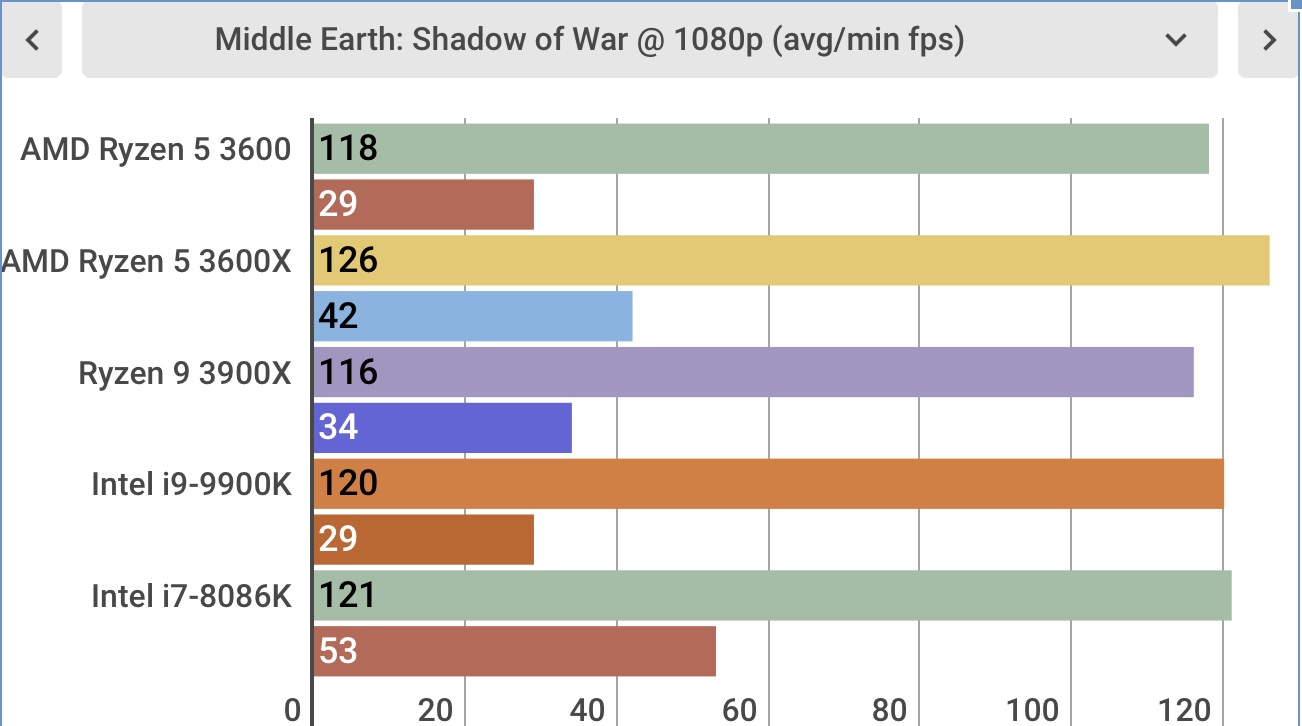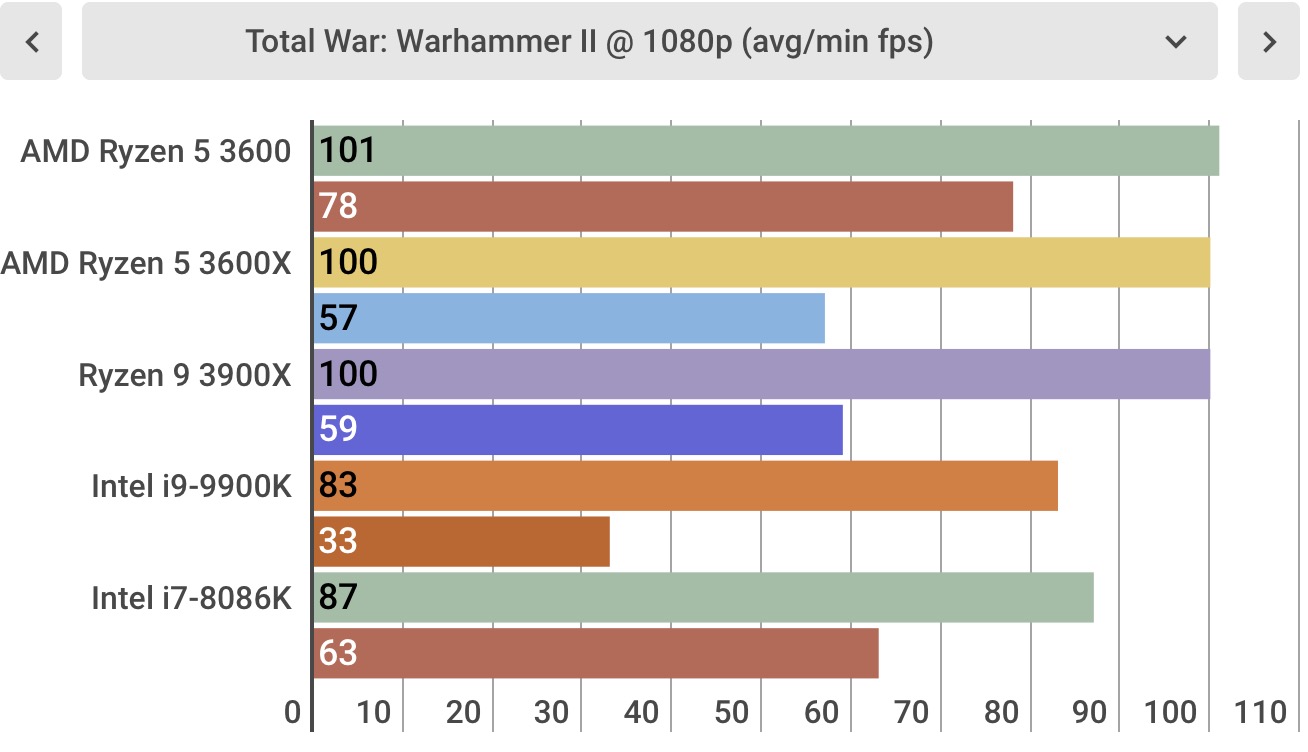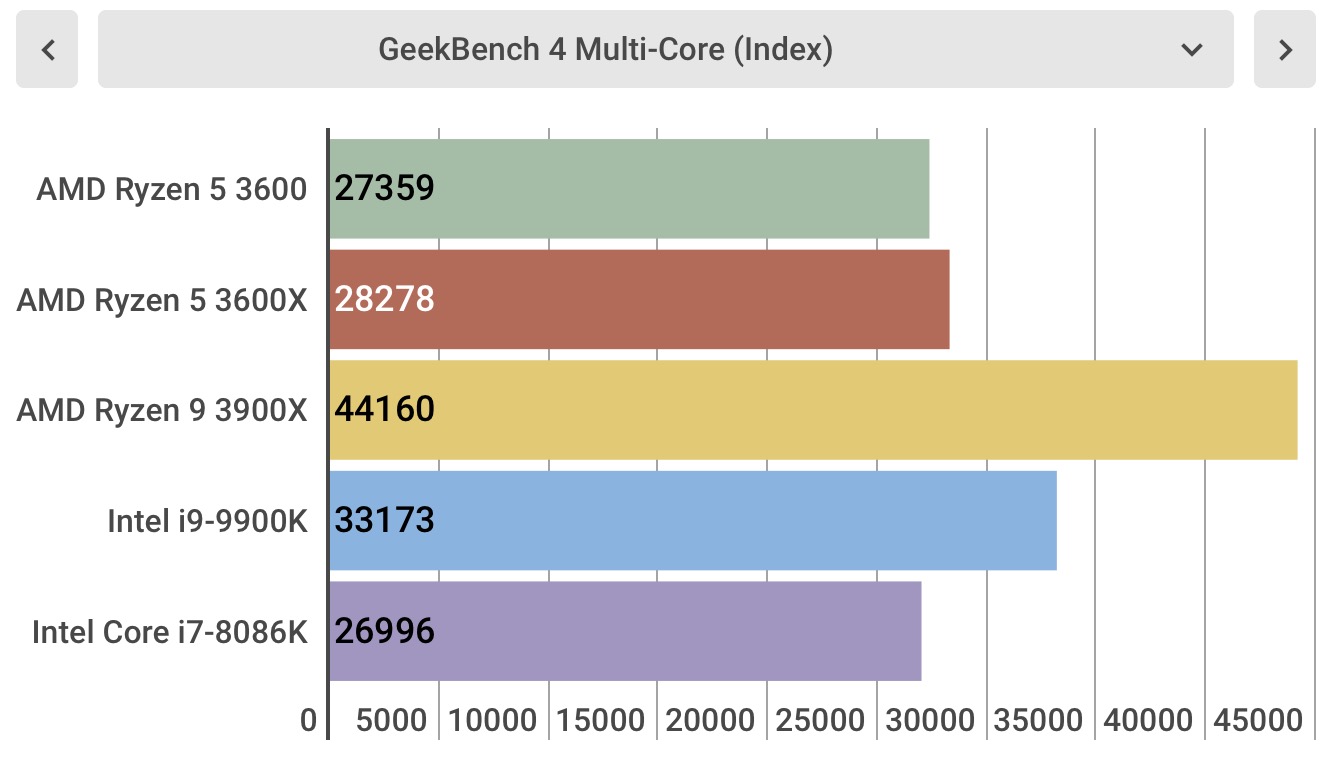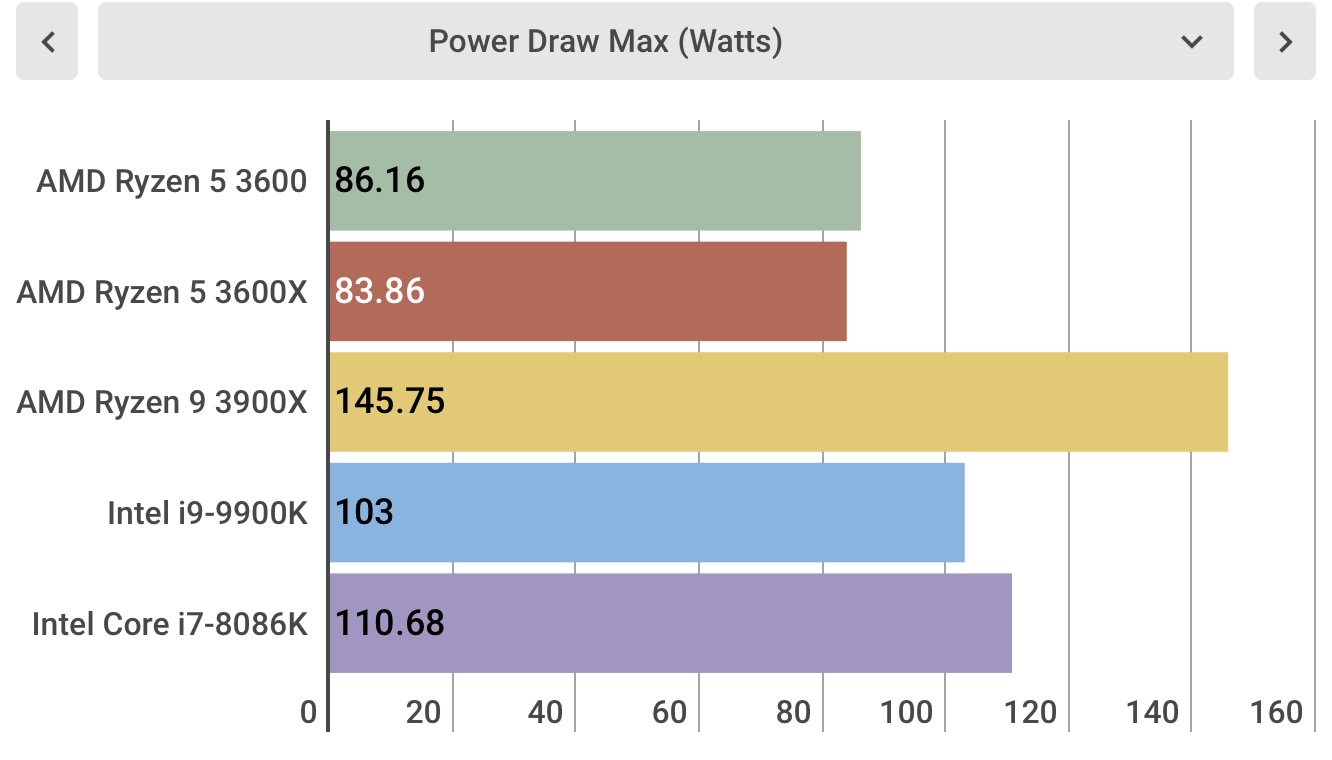TechRadar Verdict
The Ryzen 5 3600 tends to show its not a top-tier CPU, but its low price and high gaming performance hit a value sweet spot.
Pros
- +
Top-tier gaming performance
- +
Easy upgrade path
- +
High value
Cons
- -
Only six cores
Why you can trust TechRadar
AMD’s Ryzen 5 3600 replaces 2018’s Ryzen 5 2600, bringing even more performance and options to the mid-range CPU market. It sits just below the Ryzen 5 3600X, which is essentially a slightly faster version of the same processor.
Where the Ryzen 5 3600 shines is the the frugal gamers desktop. In general, it has performance below its faster siblings, but its lower specs and lower price don’t translate so directly to gaming performance. And, the extra savings can just as well go to a better graphics card or extra RAM, making the Ryzen 5 3600 an extra compelling option for gamers who want to optimize for value.

Price and availability
The Ryzen 5 3600, with its included Wraith Stealth cooler, will set you back $199 (£199, AU$315) if you don’t manage to snag it with any processor deals. But, that still makes it one of the cheaper, new, mid-range processors on the market. It undercuts the 3600X by a sizable gap but still offers an identical feature set.
When it comes to competition from Intel’s Core i5 Coffee Lake Refresh processors, the Ryzen 5 3600 maintains lower pricing against all but the cheaper SKUs. It also offers higher (with the exception of the Core i5-9600k) base clock speeds combined with Simultaneous Mutithreading, a feature Core i5 desktop chips simply don’t support. All that plus a free cooler make for a solid value package.




Features and chipset
While the update from the Ryzen 5 1600 to the Ryzen 5 2600 may have been iterative, the Ryzen 5 3600 is a bigger leap thanks to AMD’s Zen 2 architecture. The shift moves the CPU from a 12nm manufacturing process onto a 7nm process, which lets AMD improve efficiency, boost instructions-per-clock (or IPC) and push up the clock speeds. It makes these leaps all while staying in the Ryzen 5 2600’s same 65W TDP.
Helping push performance further along are increases to the memory immediately available to the processor cores. AMD has bumped up the cache with 384KB of L1, 3MB of L2, and 32MB of L3 cache — the same as that found in the Ryzen 5 3600X. That lump of cache can have an impact in both system responsiveness as well as gaming performance.
The Ryzen 5 3600 also makes the move to the X570 chipset, which comes with support for the new PCIe 4.0 standard. This offers a big bump in bandwidth for PCIe SSDs and AMD’s latest Navi graphics cards. But, for computer users who don’t need the extra features of the X570 chipset, older motherboards are a viable option thanks to the Ryzen 5 3600’s continued support for the AM4 CPU socket. In other words, upgrading from a PC with a Ryzen 1000-series processor will likely be as cheap and easy as just installing the new processor with no motherboard swap needed.
Sign up for breaking news, reviews, opinion, top tech deals, and more.
CPU: 3.6GHz AMD Ryzen 5 3600 (6-core, 35MB cache, up to 4.2GHz)
Motherboard: Aorus X570 Master
RAM: 16GB HyperX Fury RGB @ 3,000 MHz
SSD: Samsung 860 Evo 250 GB
GPU: Nvidia GeForce GTX 1080 Ti
PSU: Phanteks Revolt X 1200
Case: Praxis Wetbench










Performance
In general performance, the Ryzen 5 3600 shows that it’s a more modest processor than other Ryzen 3000-series chips, but it still has some gusto that can compete in some ways with even the Intel Core i7-8700K.
Predictably, the Ryzen 5 3600 lands just shy of the 3600X in both single- and multi-core performance, though it’s performance in our Handbrake benchmark saw it offer a close match for the X variant. That said, it’s performance is still strong. It trades blows with the 6-core/12-thread Intel Core i7-8086K, out-pacing it in the Cinebench R15 multi-core test and nearly tying in single-core speeds. It falls short of the Core i7-8086K in GeekBench 4’s single-core test, but jumps above that chip in the multi-core test.
Another nice piece of its performance is efficiency. Thanks to the shift to the 7nm process, the Ryzen 5 3600 manages a substantially lower level of power draw under load than the Intel Core i7-8086K and Core i7-8700K, which hit 110.68W and 100.63W, respectively. Meanwhile, the Ryzen 5 3600 pulled just 86.17W from the wall in our testing.
Where the Ryzen 5 3600 really shows its mettle is in gaming, with some results that even stomp on the big boys. Running Total War: Warhammer II at 1080p on our test system, which uses a Nvidia GeForce GTX 1080 Ti, the Ryzen 5 3600 managed a 78fps minimum and a 101fps average. Those scores simply crush the 8-core/12-thread Intel Core i9-9900K that costs more than twice as much. It even beats its three higher-tier siblings. At 4K in the same game, it loses ground to its siblings, but mostly stays ahead of the same three Intel chips.
In Middle Earth: Shadow of War, a game with different demands, the Ryzen 5 3600 averages performances levels in 1080p and 4K that nearly match those of the Intel Core i9-990K, Core i7-8086K, Core i7-8700K, and even the Ryzen 7 3700X and Ryzen 9 3900X.

Final verdict
The price-to-performance value of the Ryzen 5 3600 is crazy to see, especially when it stacks up against CPUs more than twice its price in gaming. All of the new Ryzen 3000-series CPUs we’ve tested have offered similar levels of performance in gaming, and the Ryzen 5 3600 is the cheapest one yet.
So, whether you want to build a computer from scratch or have an AM4 motherboard waiting for an upgrade, the Ryzen 5 3600 is a powerful option. The Ryzen 5 3600X does eke out a bit of extra performance for a small premium, but going with the 3600 will offer extra room in your budget if you need to upgrade a different part of your gaming rig, like your gaming monitor or graphics processor.

Over the last several years, Mark has been tasked as a writer, an editor, and a manager, interacting with published content from all angles. He is intimately familiar with the editorial process from the inception of an article idea, through the iterative process, past publishing, and down the road into performance analysis.
